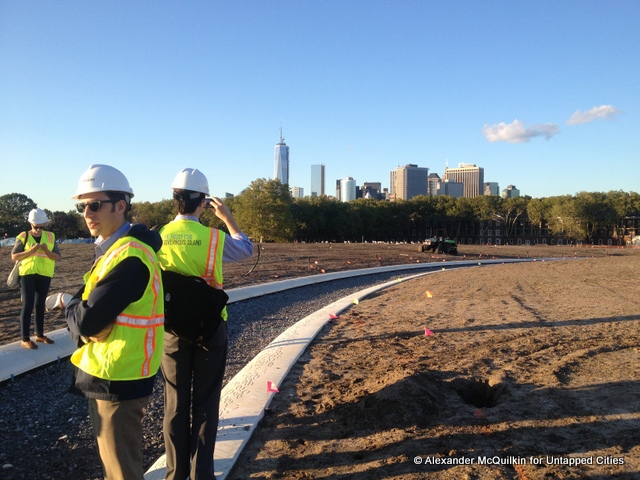
New Amsterdam indeed. In 2007, the City of New York, new owners of Governors Island, selected Dutch landscape architecture firm West 8 to rethink an island that for centuries was a hodgepodge of cannon mounts, air strips and colonels’ homes. Five years later, Hurricane Sandy left Governors Island largely unscathed, but that has not stopped West 8 from applying their particularly Dutch form of precise environmental engineering to the site.
West 8 has been tasked with master planning the entire island, including the northern Historic District (the “scoop” of the ice cream cone-shaped island) and the southern landfill addition (the cone). As the Historic District wraps up a busy summer of programming, site work is already furiously underway on the southern end. Last week, Untapped Cities got an exclusive tour of the construction site by the Trust for Governors Island’s Tours Consultant, Sarah Dunn.
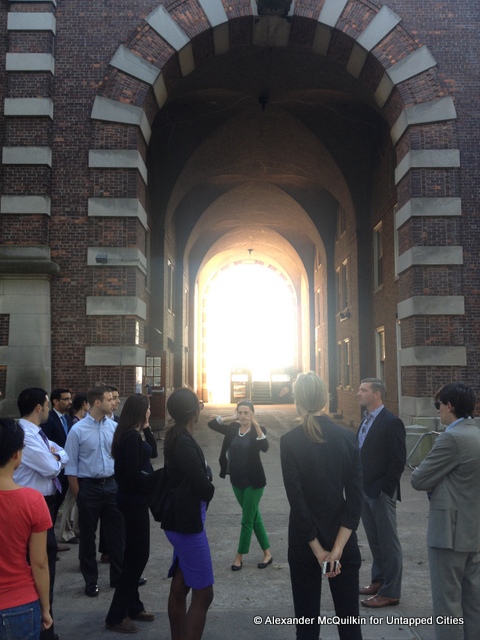
The boundary to the southern half of the island is marked by the stately Liggett Hall – an old barracks that is as long as the Chrysler Building is tall. (Construction workers at the site keep their distance from the building; it is said to be haunted.) Just through the arch that marks the building’s midway point will sit a landscaped terrace and beyond, Hammock Grove. Hammock Grove is probably the quirkiest of the park’s design elements, and maybe its most anticipated. The ten-acre grove will boast up to 100 hammocks strung between 1,500 trees representing more than 40 different species. In a nod to the island’s former name Nooten Eylandt, Dutch for “Nut Island,” the trees will be primarily of the nut-producing variety, a decision that offers the comical possibility of hammock dozers confusedly awoken by falling nature-bombs.
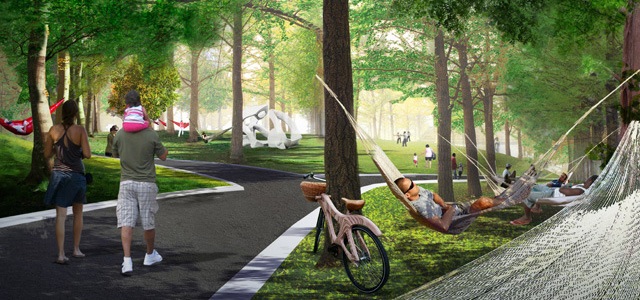 Hammock Grove
Hammock Grove
From Hammock Grove, paths lead to the Play Lawn, a grassy expanse that will feature two waterfront baseball fields. The paths curve along land that was sculpted specifically to shield inland areas from storm surge and protect vegetation from the harbor’s fierce winds. And Dunn was quick to point out the stone for the paths was sourced by barge from a quarry upstate – no trucks mangling traffic on the highways, and much-reduced greenhouse gas emissions. The custom-carved benches lining the paths were designed, made and re-made to conform to the Trust’s rigorous “Governors Island Butt Test.”
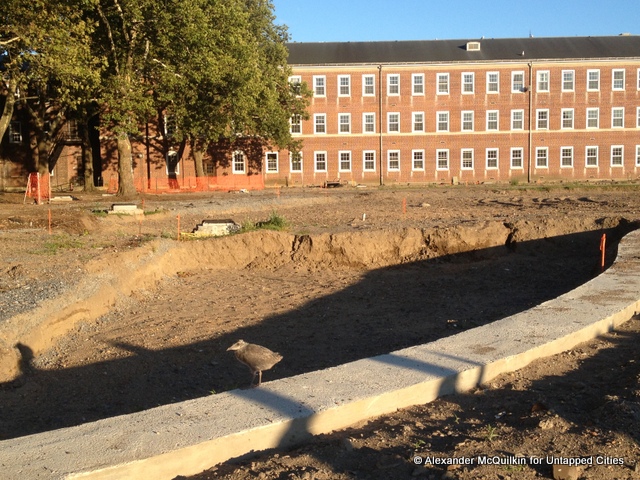
In June, Building 877, the largest non-historic building on the island, was imploded to make room for the ball fields, simultaneously opening up a gaping, front-row view of the Statue of Liberty. The view won’t last long though. The designers are intentionally blocking the view of Miss Liberty with several strategically placed hills in an effort to prescribe a winding walking sequence that will culminate in a jaw-dropping waterfront vista of the statue they are calling the “Liberty moment.”
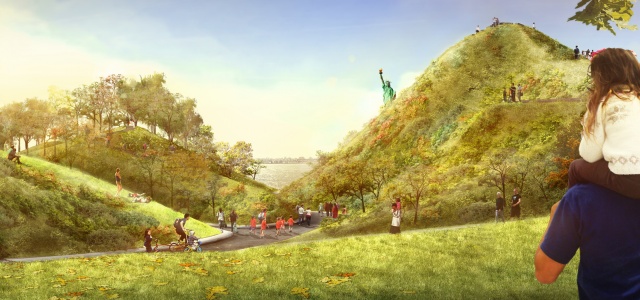 Rendering of the hills
Rendering of the hills
The four hills will range in height from 28 to 82 feet, a marked departure from the pancake-flat landscape that has defined the southern end since it was formed between 1901 and 1911 out of dirt excavated from the tunneling of the Lexington Avenue subway. In turn, the hills will be formed from the debris of Governors Island’s demolished buildings and ripped-out parking lots.
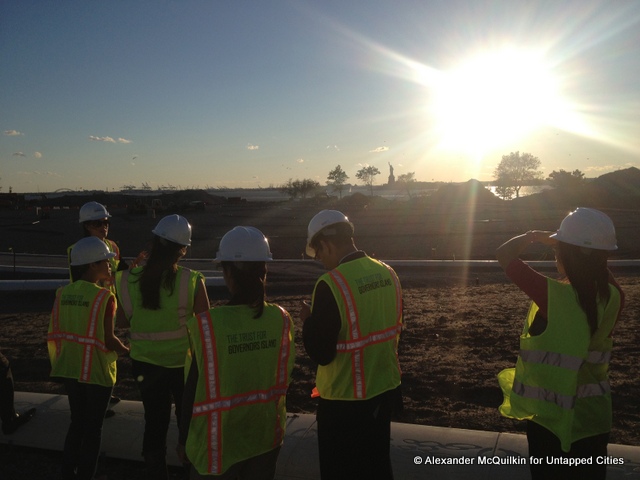
Flanking the parkland on a site plan of the island are two grey blobs labeled “Development Zone.” They are grey because they are not West 8’s to program – they are the city’s. The squat historic buildings on the island’s northern end are protected landmarks and will be repurposed variously as schools, galleries and concessions. But it is up to the Trust for Governors Island to find tenants for these giant swaths to the south. They have one big restriction and one not so big: permanent housing and casinos are the two uses that were prohibited when the federal government handed control of the island to the city. Awaiting some future demolition, the buildings that stand there now look like victims of a long-ago war: car-sized holes and scorched wood mark their roofs and sides. In fact their story is newer and somewhat more peaceful – they were used by FDNY to test firefighting methods in 2012.
When asked if any developers had expressed interest in the sites, Dunn was unsure. But when the Trust was low on funds for West 8’s hills, Google billionaire Eric Schmidt stepped in with a cool $15 million gift. Something tells me a couple of bombed-out buildings next to an 87-acre park in the middle of the New York harbor won’t be around much longer.
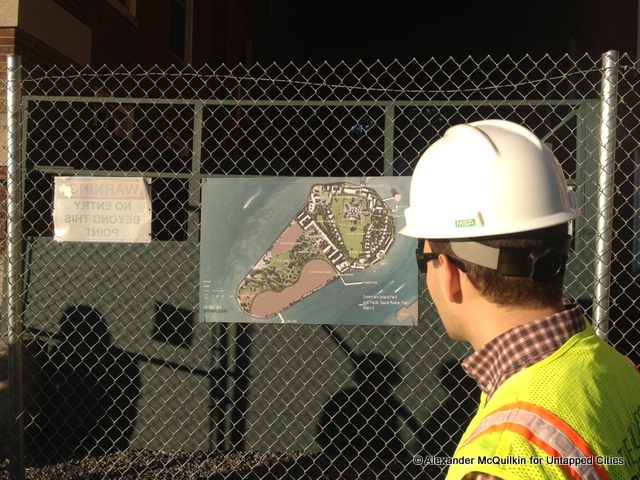
The Trust for Governors Island will be conducting public tours of the site this weekend and on the final weekend of September. Click here for more information. Also check out today’s post on the abandoned Burger King which once sat on Governors Island.
Read more of our coverage on Governors Island.





